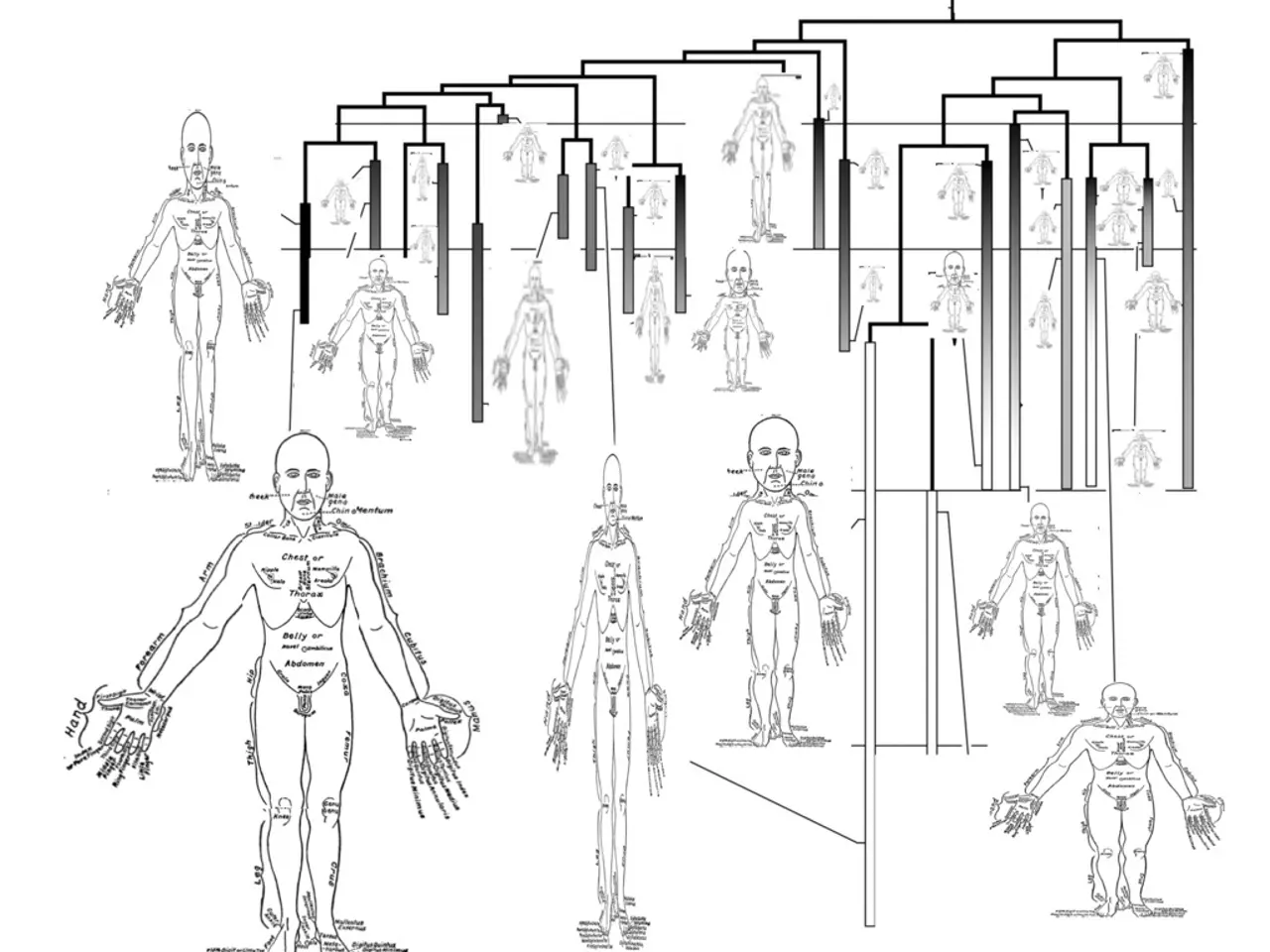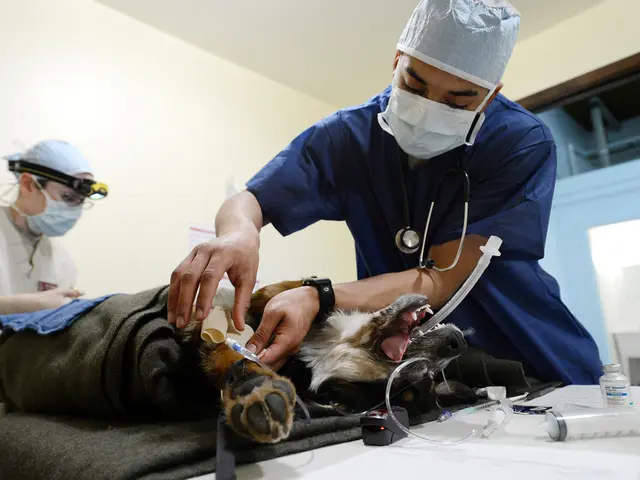Decoding the Puzzle of Neurons: Investigating the Fundamental Components of the Brain
The human nervous system is a complex network that governs a wide range of activities, from simple reflexes to complex cognitive processes. At the heart of this system are neurons, the specialized cells that play specific roles in different parts of the body.
Most neurons are formed during prenatal development and in certain brain regions in adulthood, such as the hippocampus. However, due to their highly specialized nature, the process of division and replication is more challenging.
In the Peripheral Nervous System (PNS), neurons function primarily as messengers, carrying signals between the body and the Central Nervous System (CNS, comprising the brain and spinal cord). There are three main types of neurons involved in this process:
- Sensory neurons carry nerve impulses from tissues and sense organs to the CNS. They provide information about both external stimuli (like touch or temperature) and internal conditions. Sensory neurons typically have long dendrites and short axons, with the cell body situated to the side, and they transmit signals in one direction only—from the periphery toward the CNS.
- Motor neurons carry nerve impulses from the CNS to muscles and glands, enabling movement and secretion in response to stimuli.
- Interneurons (relay neurons), though mostly found within the CNS, connect sensory and motor neurons and facilitate communication between them.
PNS neurons send electrical signals along their axons, often insulated by a myelin sheath with gaps called Nodes of Ranvier. This structure speeds up signal transmission. Signals travel from dendrites toward the axon terminals, where chemical neurotransmitters transmit the signal across synapses to the next neuron or an effector organ.
The autonomic nervous system, a subdivision of the PNS, uses afferent (sensory) neurons to collect information from internal organs and efferent (motor) neurons to regulate involuntary functions such as heart rate and digestion. It includes sympathetic and parasympathetic branches, which coordinate responses like stress and relaxation, as well as the enteric nervous system, which controls the gastrointestinal tract.
Unlike many other cells in the body, most neurons are post-mitotic, meaning they do not divide after they are fully formed. However, the brain's ability to reorganize itself by forming new neural connections throughout life, known as neuroplasticity, is crucial for learning, memory, and recovery from brain injuries.
Neurons are spread throughout the body, predominantly found in the brain and spinal cord, but they also form an extensive network within the peripheral nervous system. Despite mature neurons in the human brain generally not regenerating after injury, research has shown some capacity for regeneration, particularly in the peripheral nervous system.
References:
[1] Rakic, P. (2002). The development of cerebral cortical neurons. Annual Review of Neuroscience, 25, 343-376.
[2] Kandel, E. R., Schwartz, J. H., & Jessel, T. M. (2000). Principles of Neural Science. McGraw-Hill Education.
[3] Nicholls, J. G., Martin, J. F., & Wallace, B. G. (2012). Hodgkin and Huxley's The Nervous System. Sinauer Associates.
- The complex human nervous system, housing the brain and spinal cord, is governed by the specialized cells called neurons, which play pivotal roles in diverse bodily activities.
- While most neurons form during prenatal development, some brain regions, such as the hippocampus, undergo neurogenesis, the creation of new neurons, even in adulthood.
- Within the Peripheral Nervous System (PNS), sensory neurons, motor neurons, and interneurons carry signals, facilitating communication between the body and the Central Nervous System (CNS) or within the CNS itself.
- Electrical signals sent by PNS neurons along their myelinated axons and across synapses, using chemical neurotransmitters, are essential for learning, memory, and reactions to stimuli.
- Contrary to their ability to form new connections, most neurons are post-mitotic, meaning they do not split after their initial formation, but the brain's neuroplasticity offers hope for learning, memory, and recovery from medical conditions like brain injuries.
- The AUT Nominal System, a subdivision of the PNS, involves sensory and motor neurons in the regulation of essential involuntary functions such as heart rate and digestion, while the enteric nervous system controls the gastrointestinal tract independently.




